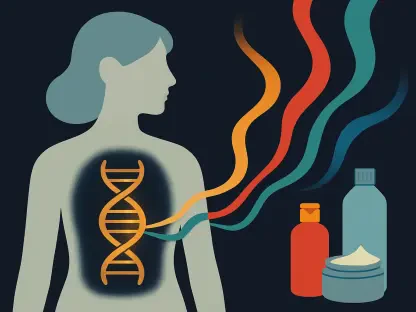In the realm of modern medicine, few breakthroughs have garnered as much attention and promise as GLP-1 receptor agonists. Initially developed to combat type 2 diabetes, these medications have broadened their scope to address obesity, cardiovascular issues, and more. Ivan Kairatov, a renowned biopharma expert, brings his wealth of knowledge on technological innovation in the industry and his extensive experience in research and development to the discussion. Here, he delves into the impact, potential, and ethical considerations of GLP-1 drugs in today’s healthcare landscape.
Can you explain what GLP-1 receptor agonists are and how they work in the body?
GLP-1 receptor agonists are a class of medications that mimic the action of glucagon-like peptide-1, a hormone that plays a crucial role in regulating blood sugar levels. They enhance the secretion of insulin, slow gastric emptying, and reduce appetite. These actions help not only in managing blood sugar in diabetic patients but also in contributing to weight loss and addressing obesity.
How did GLP-1 drugs transition from being treatments for type 2 diabetes to being used for conditions like obesity and cardiovascular diseases?
The transition emerged as researchers and clinicians observed that GLP-1 receptor agonists had beneficial effects beyond glucose control. These drugs significantly influenced weight loss and appetite reduction, proving effective in managing obesity. Furthermore, because obesity is a major risk factor for cardiovascular diseases, GLP-1 drugs contributed to improved cardiovascular outcomes, paving the way for their broader use.
What significant shift did the American Medical Association make in 2013 regarding obesity, and why was it important?
In 2013, the American Medical Association recognized obesity as a chronic disease instead of merely a lifestyle issue. This shift was monumental because it changed how the medical community approached treatment, acknowledging that obesity required serious medical intervention and resources, similar to other chronic conditions like diabetes or hypertension.
How do GLP-1 drugs contribute to weight management and obesity treatment?
GLP-1 drugs help in weight management by reducing appetite and, subsequently, caloric intake. They induce a feeling of fullness sooner and prolong it, which is invaluable for weight loss. By targeting obesity through these drugs, patients can achieve significant weight reduction, which is an essential aspect of comprehensive obesity treatment.
Why is obesity considered a chronic disease, and what are some of the health risks associated with it?
Obesity is considered a chronic disease because it involves complex interactions of genetics, environment, and lifestyle, necessitating long-term management strategies. The associated health risks are extensive and include heart disease, type 2 diabetes, certain cancers, and liver disease, making it a formidable public health challenge.
How have GLP-1 drugs impacted the public perception of obesity and weight management?
GLP-1 drugs have changed the narrative around obesity from a solely personal responsibility to a medical condition warranting clinical treatment. This redefinition has helped in reducing stigma and encouraging more people to seek help. They underscore the importance of medical intervention in what was traditionally considered a self-managed issue.
What are some of the economic implications of widespread GLP-1 use, especially concerning healthcare costs and professional opportunities?
The economic implications are twofold. On one side, the decreased incidence of obesity-related diseases due to effective GLP-1 treatments can result in reduced healthcare costs. On the other hand, the professional landscape might shift as these changes can influence various sectors, including pharmaceuticals, insurance, and even industries indirectly linked like food service and production.
Why are GLP-1 therapies considered some of the most expensive drugs on the market?
The cost stems from several factors, including the complexity of drug development, manufacturing processes, and clinical trials needed to bring them to market. The high demand and the potential long-term health benefits they offer also play a role in their pricing.
How might reduced food consumption due to GLP-1 drugs affect industries like food manufacturing and restaurants?
With less demand for food due to GLP-1-induced appetite suppression, industries like food manufacturing and restaurants could see a notable decline in consumption. This might pressure them to innovate and develop healthier options aligned with the changing dietary habits of consumers who use GLP-1 therapies.
What ethical concerns arise from the high cost and accessibility of GLP-1 drugs?
The primary ethical concern is the potential inequity in healthcare, where only those who can afford these expensive treatments benefit, leaving others without access. This disparity highlights a significant ethical dilemma in ensuring that such breakthrough therapies are available to all who need them, regardless of socioeconomic status.
How do employers and insurance providers weigh the costs and benefits of covering GLP-1 treatments?
Employers and insurance providers analyze whether the long-term benefits, such as reduced healthcare costs for obesity-related conditions, outweigh the upfront expenses of covering GLP-1 treatments. This calculation is crucial in determining broader accessibility and coverage.
What are the potential long-term safety concerns associated with GLP-1 drugs, given their relatively recent emergence in widespread use?
While GLP-1 drugs have shown tremendous promise, there are concerns about their long-term effects as comprehensive data is still evolving. Potential issues might include unanticipated side effects or decreased efficacy over time, making ongoing research and monitoring necessary.
Why is it essential not to rely solely on pharmaceuticals like GLP-1s to address systemic health issues?
Relying solely on pharmaceuticals overlooks the root causes of health issues like obesity, which include diet, physical activity, and social determinants. A multifaceted approach involving lifestyle changes and public health initiatives is essential to create lasting improvements in health.
What role do public health initiatives play in complementing the benefits of GLP-1 receptor agonists?
Public health initiatives are vital in providing education and resources that promote healthier lifestyle choices. They work alongside GLP-1 treatments by addressing broader issues like nutrition and activity levels, thereby enhancing the overall benefits of the drugs.
How can insurance coverage and public health initiatives be expanded to make GLP-1 treatments more accessible?
Expanding insurance coverage involves policy changes that recognize the long-term benefits of GLP-1 treatments in disease management. Additionally, public health initiatives can advocate for subsidies and support programs that make these therapies available to a wider population.
In your experience, what are the most significant challenges in balancing the excitement and responsibility surrounding GLP-1 drugs?
The main challenge lies in managing the high expectations versus the emerging data on safety and efficacy. It’s crucial to promote these drugs responsibly while committing to research that addresses unanswered questions about their long-term use.
What measures are in place to ensure GLP-1 drugs benefit everyone, not just a privileged few?
Ensuring wide benefit involves creating policies that improve accessibility, such as more inclusive insurance coverage and government-backed subsidy programs. Additionally, fostering public-private partnerships could help make these drugs more affordable and accessible.
How does your background in clinical research and medicine inform your views on the future of GLP-1 drugs?
My background in clinical research and medicine provides a comprehensive understanding of the intricacies of drug development and healthcare delivery. It underscores the need for rigorous testing, transparent safety data, and the importance of integrating new treatments with existing public health strategies to maximize their societal benefits.
Do you have any advice for our readers?
Stay informed about medical advancements, like GLP-1 drugs, while maintaining a broader perspective on personal and public health. It’s crucial to balance the use of pharmaceuticals with lifestyle changes and support public health initiatives that make effective treatments accessible to all.









